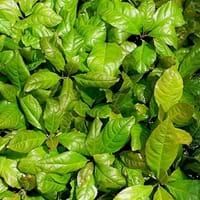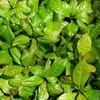Life Span
Perennial
Perennial
Type
Broadleaf Evergreen
Flowering Plants, Shrubs
Origin
China, Japan
Africa, America, Asia
Types
Not Available
Lockinch, Petite Indigo, White Profusion
Number of Varieties
Not Available
Habitat
Not Available
Along Railroads, River side, Roadsides
USDA Hardiness Zone
7-9
5-10
AHS Heat Zone
Not Available
9-2
Sunset Zone
Not Available
H1, 2a, 2b, 3a, 3b, 4, 5, 6, 7, 8, 9, 10, 11, 12, 13, 14, 15, 16, 17, 18, 19, 20, 21, 22, 23, 24
Habit
Thicket/Colonizing
Arching/Fountain-shaped
Flower Color
Light Pink
Blue, Pink, Purple, Red, White
Flower Color Modifier
Not Available
Not Available
Fruit Color
Red
Not Available
Leaf Color in Spring
Dark Green
Gray Green
Leaf Color in Summer
Dark Green
Gray Green, Light Green
Leaf Color in Fall
Dark Green
Gray Green, Light Green, Yellow green
Leaf Color in Winter
Dark Green
Not Available
Leaf Shape
Alternate
Egg-shaped
Plant Season
Spring, Summer, Fall, Winter
Fall, Spring, Summer, Winter
Sunlight
Partial shade, Full Shade
Full Sun, Part sun, Partial shade
Type of Soil
Loam
Loamy, Sandy, Well drained
The pH of Soil
Acidic
Neutral, Slightly Acidic, Slightly Alkaline
Soil Drainage
Well drained
Well drained
Tolerances
Not Available
Drought, Pollution, Salt, Soil Compaction
Where to Plant?
Container, Ground
Ground, Pot
How to Plant?
By dividing rhizomes, tubers, Seedlings, Semi-hardwood cuttings
Seedlings, Stem Planting, Transplanting
Plant Maintenance
Medium
Medium
Watering Requirements
Average Water Needs, Do Not over Water
Form a Soil ring to water efficiently, Water Deeply, Water twice a day in the initial period
In Summer
Average Water
Lots of watering
In Spring
Less Watering
Moderate
In Winter
Moderate
Average Water
Soil pH
Acidic
Neutral, Slightly Acidic, Slightly Alkaline
Soil Type
Loam
Loamy, Sandy, Well drained
Soil Drainage Capacity
Well drained
Well drained
Sun Exposure
Partial shade, Full Shade
Full Sun, Part sun, Partial shade
Pruning
Prune after harvesting
Cut or pinch the stems, Prune for shortening long shoots, Prune if you want to improve plant shape, Prune ocassionally, Remove damaged leaves, Remove dead or diseased plant parts, Remove deadheads, Remove shoots
Fertilizers
All-Purpose Liquid Fertilizer
All-Purpose Liquid Fertilizer
Pests and Diseases
Not Available
Downy mildew, Leaf spot, Spider mites
Plant Tolerance
Not Available
Drought
Flowers
Insignificant
Yes
Flower Petal Number
Single
Single
Foliage Texture
Medium
Medium
Foliage Sheen
Glossy
Matte
Attracts
Not Available
Butterflies, Hummingbirds
Allergy
Not Available
Vomiting
Aesthetic Uses
Ground Cover, Showy Purposes
Showy Purposes
Beauty Benefits
Not Available
Not Available
Environmental Uses
Provides ground cover
Air purification
Medicinal Uses
Not Available
Not Available
Part of Plant Used
Flowers, Fruits
Flowers, Leaves
Other Uses
Not Available
Showy Purposes, Used as Ornamental plant
Used As Indoor Plant
No
No
Used As Outdoor Plant
Yes
Yes
Garden Design
Container, Edging, Foundation, Groundcover, Mixed Border, Rock Garden, Wall
Edging, Feature Plant, Foundation
Botanical Name
ARDISIA japonica
Buddleia davidii
Common Name
Japanese Ardisia, Marlberry
Butterfly Bush, Summer Lilac, Butterflybush
In Hindi
Japanese Ardisia
Butterfly Bush
In German
Japanese Ardisia
Schmetterlingsstrauch
In French
Japanese Ardisia
buisson de papillon
In Spanish
Ardisia japonica
arbusto de las mariposas
In Greek
Japanese Ardisia
Butterfly Μπους
In Portuguese
Japanese Ardisia
arbusto de borboleta
In Polish
Japanese Ardisia
Butterfly Bush
In Latin
Japanese Ardisia
papilio rubo
Phylum
Magnoliophyta
Spermatophyta
Class
Magnoliopsida
Dicotyledonae
Family
Myrsinaceae
Scrophulariaceae
Clade
Angiosperms, Asterids, Eudicots
Angiosperms, Asterids, Eudicots
Tribe
Not Available
Not Available
Subfamily
Not Available
Not Available
Number of Species
Not Available
Season and Care of Japanese Ardisia and Butterfly Bush
Season and care of Japanese Ardisia and Butterfly Bush is important to know. While considering everything about Japanese Ardisia and Butterfly Bush Care, growing season is an essential factor. Japanese Ardisia season is Spring, Summer, Fall and Winter and Butterfly Bush season is Spring, Summer, Fall and Winter. The type of soil for Japanese Ardisia is Loam and for Butterfly Bush is Loamy, Sandy, Well drained while the PH of soil for Japanese Ardisia is Acidic and for Butterfly Bush is Neutral, Slightly Acidic, Slightly Alkaline.
Japanese Ardisia and Butterfly Bush Physical Information
Japanese Ardisia and Butterfly Bush physical information is very important for comparison. Japanese Ardisia height is 30.45 cm and width 60.95 cm whereas Butterfly Bush height is 7.50 cm and width 4.00 cm. The color specification of Japanese Ardisia and Butterfly Bush are as follows:
Japanese Ardisia flower color: Light Pink
Japanese Ardisia leaf color: Dark Green
Butterfly Bush flower color: Blue, Pink, Purple, Red and White
- Butterfly Bush leaf color: Gray Green
Care of Japanese Ardisia and Butterfly Bush
Care of Japanese Ardisia and Butterfly Bush include pruning, fertilizers, watering etc. Japanese Ardisia pruning is done Prune after harvesting and Butterfly Bush pruning is done Cut or pinch the stems, Prune for shortening long shoots, Prune if you want to improve plant shape, Prune ocassionally, Remove damaged leaves, Remove dead or diseased plant parts, Remove deadheads and Remove shoots. In summer Japanese Ardisia needs Average Water and in winter, it needs Moderate. Whereas, in summer Butterfly Bush needs Lots of watering and in winter, it needs Average Water.



